When you see a pack, probably the first thing you notice are those numerous straps hanging around. So what are all straps on a backpack used for? Keep reading, all of them are explained here.
There are at least five types of straps on a backpack:
- Straps used for gear attachment only.
- Straps with dual use for the pack compression and gear attachment.
- Straps used for comfort and packs stabilization.
- Harness straps.
- Straps used to close the pack.
All of them are discussed in detail below.
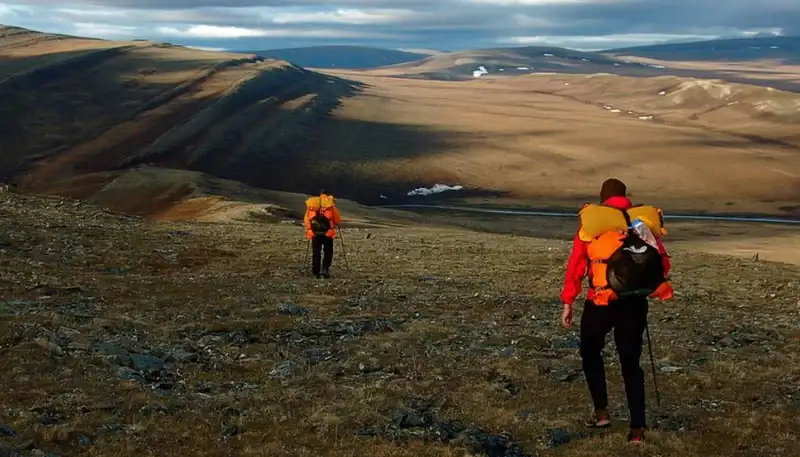
Terminology
This text is about straps and not about cords. I assume you know the difference. The cords are round in cross-section, and you can usually find them on the front of a pack. Straps are at various sides of a pack.
In some ultralight packs you have side cords instead of side straps. This is simply to reduce weight. In this case, their purpose is the same as of the side straps discussed below.
Also, I am not describing various loops, this is address in my separate post. These include trekking poles loops on the bottom, some packs have attachment loops on the lid, most packs have a carry handle loop on the top, etc.
In many of the pictures below, I am using my own Deuter Futura pack simply because it has almost all the straps discussed in the text.
Backpack straps used for gear attachment
I assume you have seen such straps on the bottom of a pack, sometimes also on the front, and sometimes on the lid. So what are the straps at the bottom of backpacks for? These straps are in place to attach items like a sleeping pad or anything similar.
Sometimes these straps are more on the front, across the zippered access to the bottom compartment. But the purpose is the same.
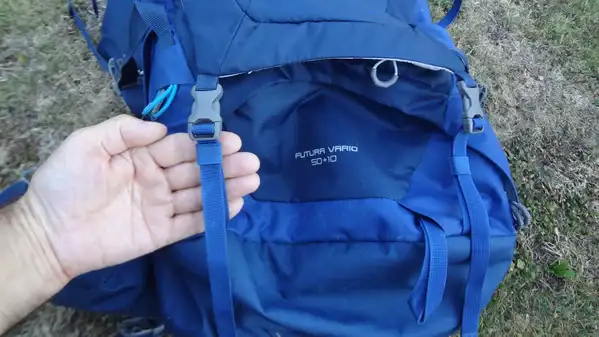
In the picture below you can see how they are used to attach my tent:
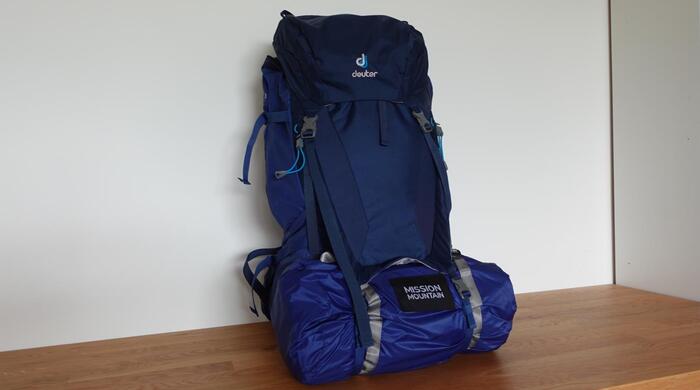
Backpack straps used for the pack compression and gear attachment
So what are compression straps on backpack? These are straps used to cinch the pack and to make it more compact. This may also bring the load closer to the body and make the pack more stable.
Side compression straps
As their name suggests, these straps are on the sides of a pack. Smaller packs may have one on each side, while bigger packs usually have two on each side, and this is why we speak about lower and upper side compression straps.
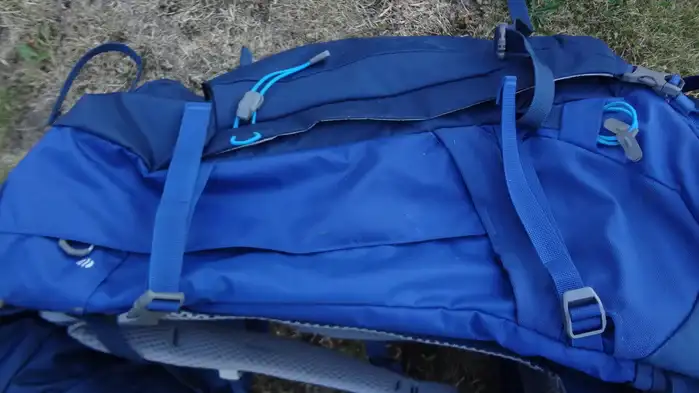
Some larger packs can have three side straps on each side, but such examples are a bit rare.
The purpose of these straps is dual. You can use them to simply cinch the pack. This is useful if you want to stabilize the load.
In particular, in the beginning of a self-supporting tour you may have more stuff in the pack, like food and water, toilet paper, etc. So as you spend the stuff, the pack’s content will reduce and you may want to use the straps to cinch the load.
But with such side straps you can also keep in place some elongated items that you attach on the side. Such an item can be placed in the side pocket and then kept in place with the upper side strap. I do this with a camera tripod which I sometimes carry with me, see the picture:
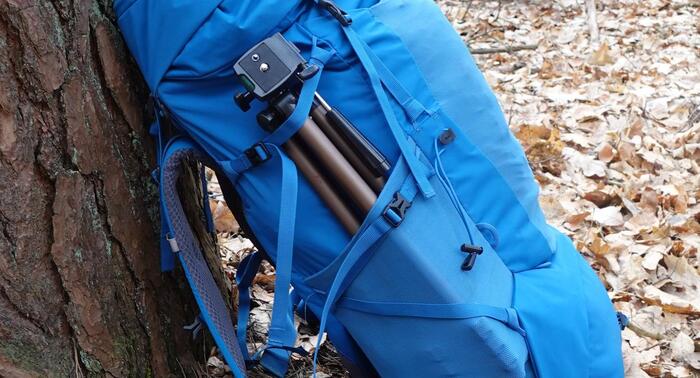
Note that in some good packs the side straps are designed with a buckle so that, when needed, you redirect them from the two sides and close on the front of the pack. This may be useful if you want to attach something on the front. The picture below shows this in my Mammut Lithium 40 pack:
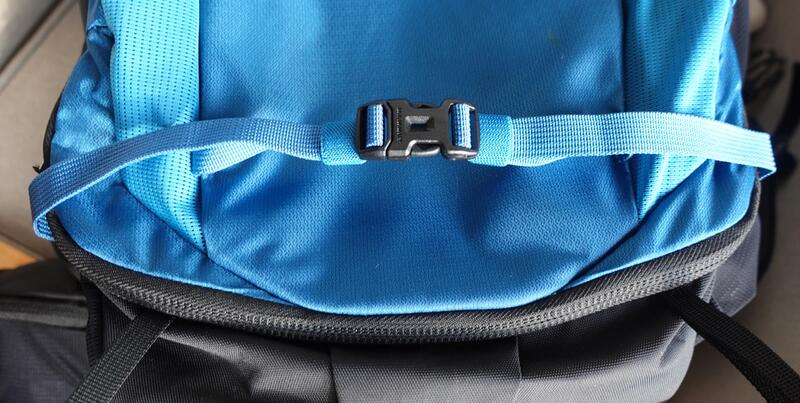
Top compression strap
This is about a single strap that crosses the collar, see the picture below. Not all packs have this feature. With this, you can compress the collar when there is too much stuff in the pack, and in that way you stabilize the load.
But you can also put a tent here and keep it in place with this top strap, and then cover it with the lid. Similarly, here you can store your climbing rope and fix it in place with this strap.

The picture above shows it used in my Deuter pack which has an expandable collar, the feature you use when you have more stuff to carry. This is when such a top strap is also very useful to compress the added stuff.
Front compression straps
Some packs have these extra straps on the front. They can be used for pack’s compression, and also to carry extra stuff.
You can fix long items here like skis. The picture below shows front straps in the incredibly popular Teton Sports Mountain Adventurer 66 pack:

Backpack straps used for comfort and packs stabilization
There are two of this type on most packs. They include the following:
Dual load lifter straps
You have them two, one on each side behind your neck, see the picture below.
Their role is to stabilize the load in particular when the pack is full and they are particularly important in longer packs. When you pull them forward, the upper part of the pack gets closer to the body.
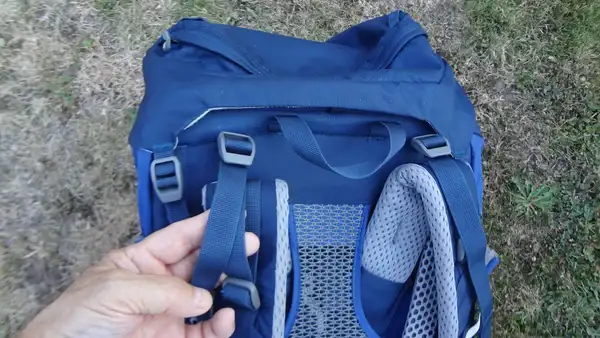
You will find some statements around that they should be at certain angle, but that makes no sense because packs have different lengths. In shorter packs these load lifters are practically horizontal.
Sternum strap
So what is a sternum strap on a backpack? This is typically a single strap that you have on the front on the chest. It connects the two shoulder straps. But there are trail running and similar packs where you may have them two as in the Osprey Talon Velocity 30 pack:
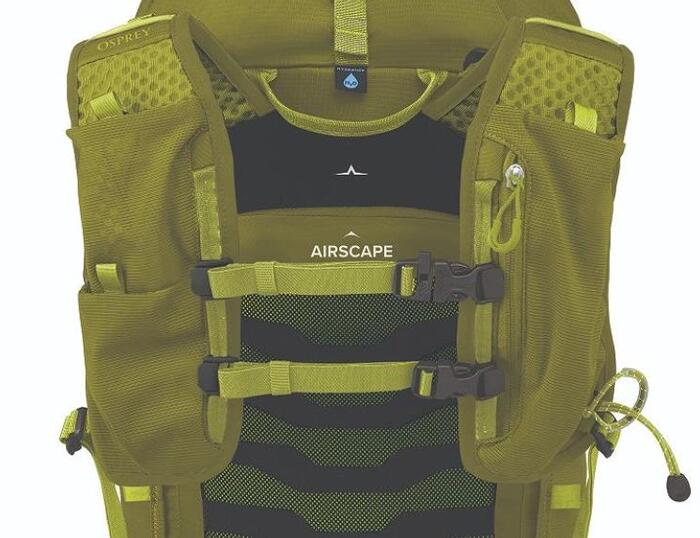
The picture below shows how it looks on my Deuter pack. The purpose of this strap is to keep the shoulder harness at an optimal width and to prevent the shoulder straps to slide off the shoulders.
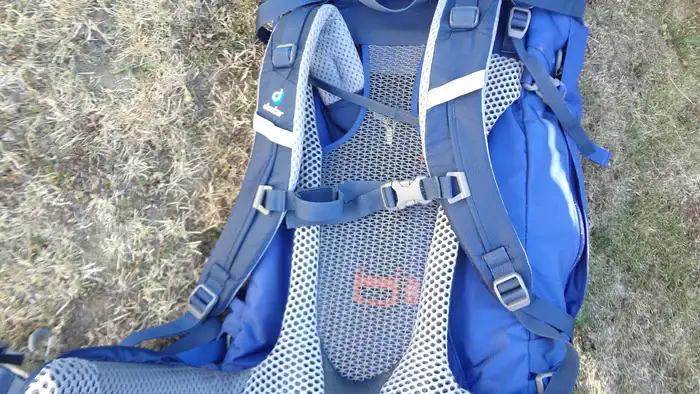
This strap is adjustable both vertically and horizontally. In vertical direction you may have a slider type adjustability as in the picture above, or this can be a ladder type adjustment system. The latter is in my Mammut Lithium 40 pack shown below. I think this is a more reliable system that can never fail.
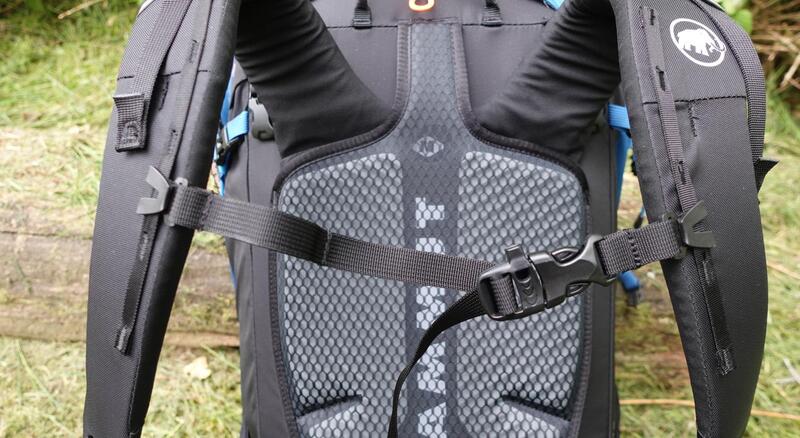
In many packs you have an emergency whistle integrated in this strap, as in my pack above.
Straps used to carry the pack – harness straps
These straps include the following:
• Dual webbing straps that connect shoulder harness with the pack’s body on the lower sides of the pack. They are shown in the picture and this is the Deuter Women’s Futura Air Trek 45 + 10 SL Backpack.
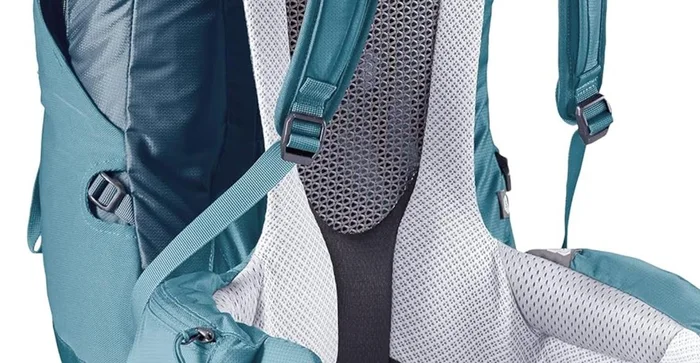
• Front pull webbing straps on the hip belt. These are the widest and strongest on the pack. The picture below shows them in my Mammut pack:
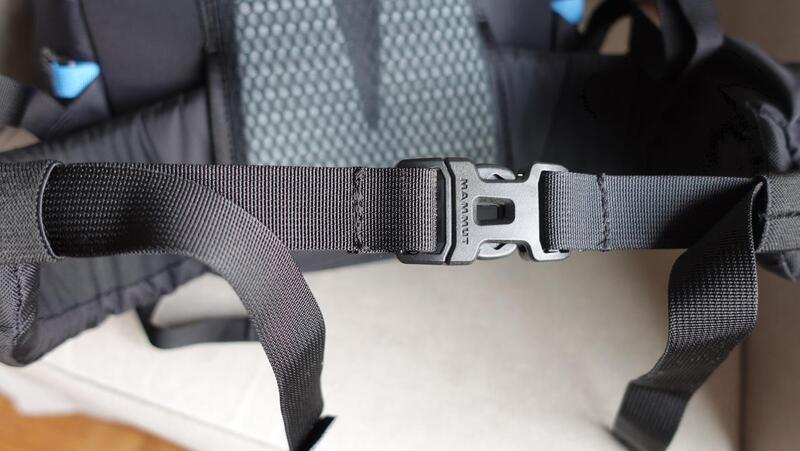
Note that this is the pull-forward type design. This is better than what you can have in some other packs with a pull to the side design, see it in the picture showing my Osprey Atmos AG LT 65 pack:
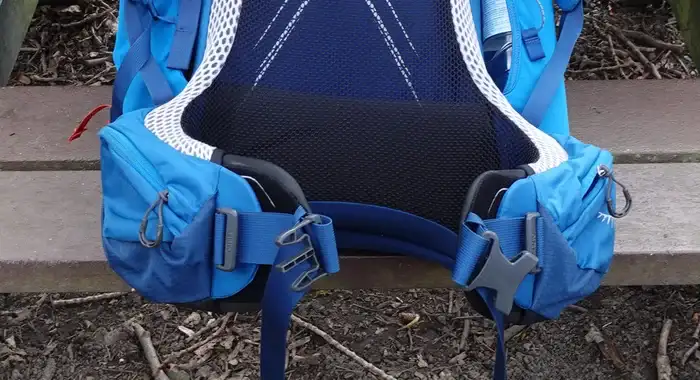
• Sometimes, in good packs you have V-shaped straps on each side of the hip belt that connect to the main front strap with buckle. The picture below shows how they look:
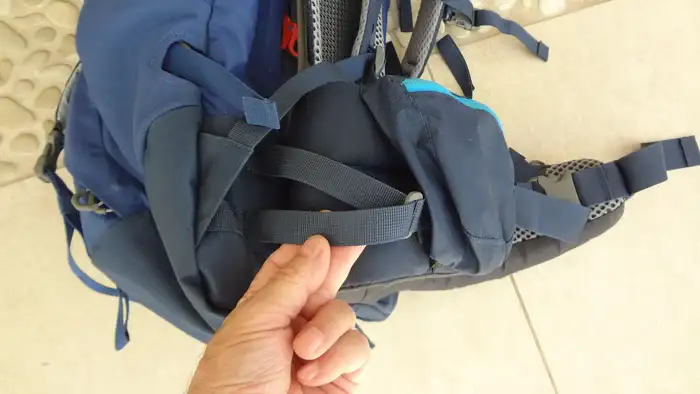
Straps used to close the pack
1. These are usually dual lid straps that are attached to the lid from the front side. They connect the lid to the front of the pack, the picture below.
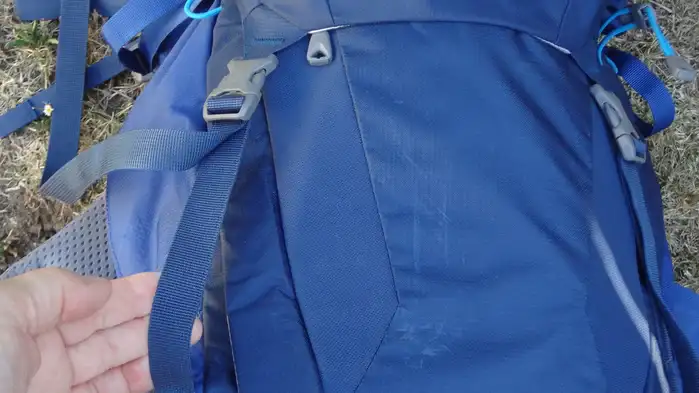
Some packs have only one strap for this purpose, you can see it in the Teton Sports Hiker 3700 Pack.
But there are packs with a roll-top closure and they are without lid and without such straps. Also, panel loading packs with a zippered access to the main compartment are without such straps.
2. Some packs also have lid straps that make it a floating type. In the Deuter Futura Air Trek pack this is particularly convenient because the collar can be expanded. This gives those +10 liters in its official name. For this, it is good that the lid can be adjusted, so you lift it up to cover the extended pack.
The picture shows where they are located. This feature is available in many backpacks on the market, even if they do not have an expandable collar.
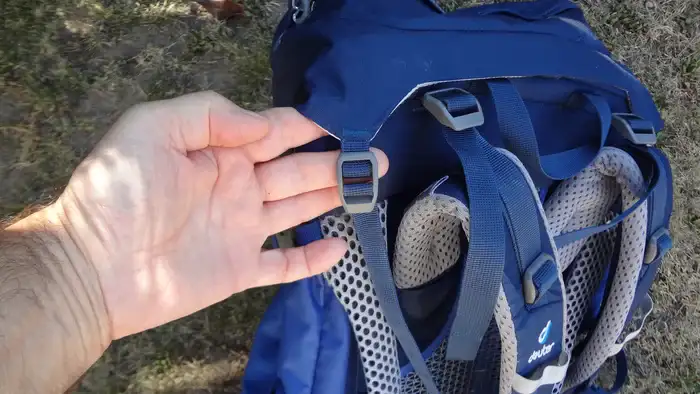
3. Front pocket strap with a strap and buckle. This is available in many packs, you can see it in my previously mentioned Osprey Atmos AG LT 65 pack:
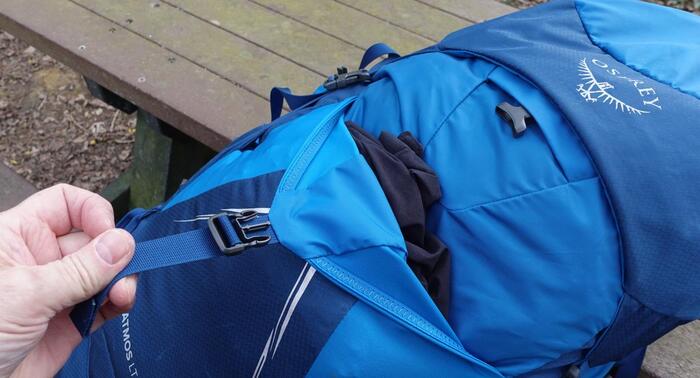
I think this is better to keep your items secure in place than having a front pocket without a closure strap.
Conclusion
So I stop here, and hopefully I have managed to describe what all straps on a backpack are used for. As you realize, there are several different groups of straps on a backpack, they are there for reason and all play an important role.
Not every pack has all of them of course. I would say that these attachment elements are the main difference between hiking and standard backpacks.
For more texts of this type please check in the category FAQs here in the site. If you need help and have questions, please use the comment box below.
Subscribe to my weakly newsletter and stay informed, the subscription form is given below. Thank you for reading and have a nice day.
Leave a Reply